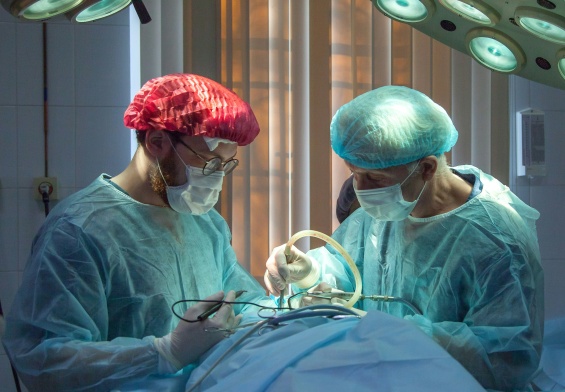We’ve all seen the pictures of the hunched-over elderly person who has to walk with a cane. It’s one of the first things that come to mind when we think of older folks’ ailments… back problems. But is back pain a normal sign of aging? Does it really have to be this way? Must we suffer with back problems, medical conditions of the spine, and back pain, just because we’re headed toward our senior years? The answer is an unequivocal ‘Absolutely not! Back pain is not an inevitable, unavoidable part of getting older. In fact, many people throughout the country find that ‘aging gracefully’ includes aging without having to suffer with it.
Causes
Among the most common back ailments among people in their 50s, 60s, and beyond are injury or strain, especially from repetitive motion; bulging or herniated disc; arthritis; and osteoporosis.
Injury, strain, and repetitive motion
Obviously, back injuries can occur at any age. However, as we age, injuries can occur more often, or they can be more pronounced, since bones tend to become more brittle the older we get. Another problem that can be accentuated as we age is repetitive motion injuries, often caused by certain types of occupations, such as construction work and other types of physical labor. But these aren’t the only types of jobs that can cause back pain to older folks. Working at a job that requires long periods of sitting at a computer or even using a keyboard can also can undue stress on the back.
Bulging or herniated disc
Discs in the spine are cushions that protect vertebrae from rubbing together. When a disc is bulging or herniated (cracked), pain and loss of function occur. Herniated and bulged discs are among the top causes of back pain occurring in people over 50. This often occurs when cartilage in the disc ruptures and leaks, causing pressure on nerves and pain.
Arthritis
Arthritis is one of the leading causes of back pain in the elderly. Osteoarthritis often occurs in the lower back. For many patients, arthritis can occur in the spine. This can lead to narrowing of the space that surrounds the spinal cord (spinal stenosis).
Osteoporosis
Osteoporosis, which is the loss of bone mass and density, tends to develop more often in older patients, especially when they’ve suffered compression fractures. Osteoporosis can lead to pronounced back pain and accompanying bone fracturing or breakage because with it comes bones that are brittle.
Treating back pain
The good news about many types of back pain is that there are a number of treatment options that can help to relieve or even eliminate pain associated with medical conditions of the back. These can include exercise and physical therapy; medications; and surgery.
Exercise and physical therapy
Exercise can relieve stress from repetitive motion, and if performed correctly, it can even reduce pain caused by injuries and other medical conditions of the back. If you’re a back pain sufferer, especially if you’re over 50, never begin an exercise or physical therapy program without first consulting a doctor or a joint specialist.
Medications
Medications are often prescribed to relieve and treat most types of back pain, whether from injury, repetitive motion, or a medical condition such as osteoporosis. Your doctor may start you on a regimen of over-the-counter medications such as naproxen, Tylenol, or ibuprofen, especially if your pain is not debilitating. For those who suffer with more pronounced back pain, medications may include anticonvulsants or opioids in order to relieve pain and restore function.
Surgery
Less frequently, your physician may recommend a surgical procedure. Surgery is often prescribed for herniated discs, as these don’t often get better on their own. However, as we age, our chances of being a good candidate for surgery lessens. Oftentimes, this is due to having another medical condition such as poorly controlled diabetes or anemia. In recent years, the field of spine surgery has witnessed remarkable advancements, driven by innovative techniques and technologies. To know more, click here.
Thankfully, aging accompanied by back pain is not a foregone conclusion. In many cases, preventing back pain is more about lifestyle than it is years. And, for those who already suffer from back pain and problems involving the spine, proper diagnosis and treatment often reduce or even eliminate back pain, allowing patients to get back to their active lives. If you’re a back pain sufferer, contact a joint specialist in South Orange to schedule a consultation.
References:




